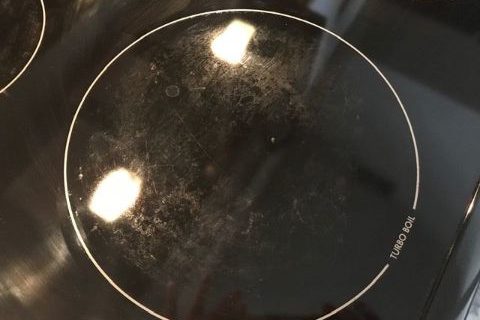
Glass-top stoves can make your kitchen look sleek and modern. They also never require owners to clean or replace drip pans or burner grates, but if you are the proud owner of one of these stovetops, you’ve noticed that every spill or splatter is much more noticeable. Here are some tips on how to clean your glass stovetop so that you can keep your kitchen looking its best, and before you get started, here is what you’ll need!
- Baking Soda
- Spray Bottle of distilled white vinegar
- Microfiber cloths
- Bucket of hot water
Before you set out to make your stovetop look brand new again, keep these tips in mind!
- Never clean your glass stovetop when it is still hot.
- Harsh or abrasive cleaners can scratch your stovetop.
- Never use scouring pads or scrub brushes, as they could scratch your stovetop. Stick to microfiber towels or sponges. Razor blades can be used in extremely burnt on situations.
To clean a dirty glass stovetop, follow these easy steps, and your stove will look brand new in no time!
- Once the stovetop is cool, generously spray the surface with the distilled white vinegar.
- Liberally sprinkle baking soda over the vinegar.
- Dip your clean towel in hot water, wring out any excess water.
- Place the towel over the mixture of vinegar and baking soda.
- Let the mixture and towel sit for 10 to 15 minutes.
- Remove the towel and wipe away the remaining vinegar and baking soda mixture with the microfiber cloth.
- Spray the surface with vinegar again and use a clean microfiber cloth to buff any remaining streaks out.
- Repeat step 7 for any leftover residue.
If you find yourself with tougher burnt-on rings, then we recommend using a razor blade to remove the gunk. When used properly, a razor blade can be your glass-top stove’s best friend.
You’ll need:
- A razor blade in a holder or scraper tool
- Spray bottle of distilled white vinegar
- A microfiber cloth
- Make sure the surface is cool.
- Spray any affected areas with vinegar to soften the burnt-on residue. Ensure the surface is soaked very well when using the razor blade. The more water (or vinegar) used will help decrease the chance of damaging the surface while using the razor blade.
- Scrape the residue gently with the razor. It is essential to hold the blade properly: Do not use the corners of the blade, or you may scratch your stovetop! Try to hold the sharp edge at a slight angle from the top of the stove. It should be as flat as possible.
- Wipe away the remaining residue with a clean microfiber cloth.
- Repeat the above steps as necessary.









